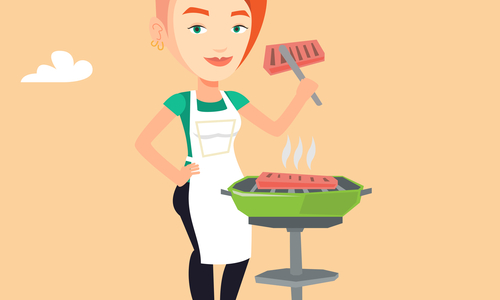Essential Grilling Tips for Summer
8 minute read | Tips

Summer is here, and with it comes the season of backyard barbecues and outdoor cooking. Whether you're a seasoned grill master or just starting out, there's always room to improve your grilling skills. At AEI, we believe that mastering the art of grilling not only enhances your meals but also makes the whole experience more enjoyable.
Here are some essential barbecue tips that can help elevate your grilling game this summer!
Grilling Basics for PGS Grills
- Clean your grill before each use. A clean grill ensures better flavor and prevents unwanted residue from affecting your food. Use a sturdy metal brush to scrape off any leftover bits, and make sure the grill is hot before you start cooking — this makes cleaning easier.
- Avoid flipping your meat too often. Flipping your burgers or steaks repeatedly can prevent them from searing properly. Cook each side for the recommended time, and flip only when necessary to achieve even cooking and a nice crust.
- Don’t press down on the meat. Pressing on juicy cuts like burgers or chicken can cause the juices to escape, resulting in drier, less flavorful food. Let the meat cook undisturbed for best results.
- Keep a spray bottle nearby for flare-ups. Flames can get out of control quickly, especially with fatty meats. A spray bottle filled with water can help manage flare-ups without cooling the grill too much.
- Use a meat thermometer for accuracy. Even experienced cooks can misjudge doneness by touch or color. A thermometer ensures your meat is cooked to the right temperature, avoiding undercooked or overcooked results.
- Let meat come to room temperature before grilling. Cold meat takes longer to cook and may result in uneven doneness. Allow it to sit for about 30 minutes before placing it on the grill, unless you’re aiming for a rare sear, such as with tuna.
- Be aware of carryover cooking. Food continues to cook after being removed from the grill, so take it off slightly before reaching your desired doneness to avoid overcooking.
- Rest your meat after grilling. Allowing meat to rest for a few minutes helps it retain its juices, making it more tender and flavorful. Steaks need about 5 minutes, while larger cuts like roasts may need 10–20 minutes.
- Grill bone-in meats at high heat first. For items like chicken legs or ribeye, start with high heat to sear the outside, then move to indirect heat for even cooking without charring the bones.
- Keep things simple when serving a crowd. When cooking multiple types of meat, choose ones that cook similarly to avoid confusion. Pair them with a variety of sides to offer a balanced and satisfying meal for everyone.
Gas vs. Charcoal: What’s the Difference?
Gas Grills vs. Charcoal – A Quick Comparison
Gas grills, whether propane or natural gas, burn cleaner than charcoal. Their main byproducts are water vapor and carbon dioxide. Charcoal, on the other hand, produces a range of compounds that can add unique flavors to your food. As fat drips onto the coals, it creates aromatic compounds that enhance the taste of grilled meats.
For high-heat foods like burgers, steaks, or fish, the difference between gas and charcoal is minimal when using similar heat levels. However, for slow-cooked dishes like ribs or brisket, charcoal adds a distinct smoky flavor that gas grills can’t replicate.
When grilling indirectly, charcoal maintains a smokier profile over time, giving your food a richer, more complex taste. If you're looking for that authentic barbecue flavor, charcoal might be the way to go.
Â
Want more information? Have a question? Contact us today, and we will be happy to help!
Linear Profile Sanding Machine
Linear Profile Sanding Machine,Wood line copying sander,Wood Linear Shaping Sander,Linear Sander Machine,Profile Linear Sander,Wood Moulding Sanding Machine
Foshan Sandwell Machinery Co.,ltd , https://www.sandwellsand.com